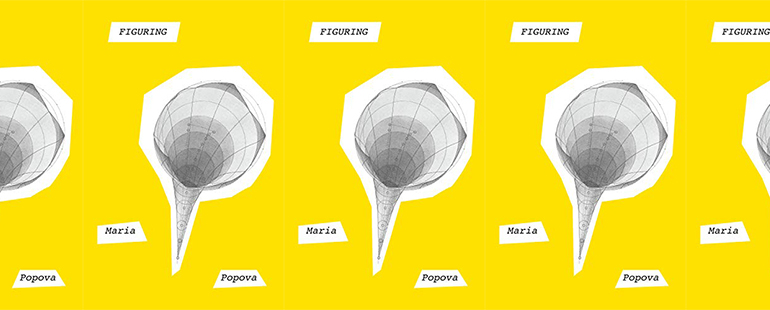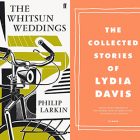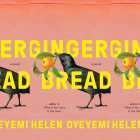Maria Popova’s Figurations of Inner Life

In Maria Popova’s Figuring, all lives lie at the mercy of mental figuration. One individual meets another, is imperceptibly changed by the encounter, and the world’s intellectual and imaginative arc is altered, irrevocably so. Or, a person writes a book, which another person reads, and both of those individuals’ existences are thus transformed. Or, someone sees a comet, or they watch their daughter die, or they have a year of “terror,” or they take a trip to Italy. It almost does not matter what someone does or what happens to them, Popova shows. Rather, what matters is what someone thinks they have experienced. As she suggests, the true changes in our lives are cognitive as much as they are biographical—or, rather, if they are biographically significant, it is only because they are cognitively so. Indeed, in the grand scheme of things, and given their very ordinariness, as moments of human experience to which we can all relate, most of the important events of our lives resemble those of other lives: there is a newborn child, or there is a death in the family, or a love affair goes wrong, or one’s career is derailed. This is true even when what happens is the product of a mental event: when an individual publishes a book or creates a work of art. As Popova demonstrates, the true proportion of any occurrence, its true significance, is always the product of how it is perceived by the mind and “figured” mentally, emotionally, and intellectually. In other words—and to give just one example—one can think of the publication of On the Origins of the Species as Charles Darwin’s figuring of the death of his young daughter, the biographical event both shaping and being shaped by Darwin’s intellectual leap and his construction of a system of thought and of a new vocabulary to explain human finiteness.
As in the example above, in Figuring, Popova illustrates this idea by chronicling the inner lives of—mostly nineteenth-century, American, women—intellectuals, writers, artists, and scientists, demonstrating how their biographical trajectories were shaped by their cognitive attempts to make meaning out of their experiences. In her five-hundred-page compendium, she charts some of the ways in which this meaning-making can take place, in the process demonstrating that, “beyond any human lifetime, and often even within it, what is recorded is what is remembered, the records gradually displacing the actuality of lived events. And what is recorded is a fraction of what is thought, felt, acted out, lived—a fraction at best edited by the very act of its selection, at worst warped by rationalization or fictionalized by a deliberate retelling of reality.” Indeed, most of the time, “the stories we tell about our own lives, to others but especially to ourselves, we tell in order to make our lives livable.” The world, Popova argues, is what we make of it and can only exist as we make it. As she then goes on to suggest, life exists only in our own mental image of it, in our configurations of its potentials and pitfalls at the seams of thought and language. “Throughout life,” she argues, “our habits, beliefs, and ideas evolve. . . . Our physical and social environments change. Almost all our cells are replaced. Yet we remain, to ourselves ‘who’ ‘we’ ‘are.’ Nor is this ‘who’ static.” This is because every self is a “mosaic, a representation” of who we have been before and who we could become. As she puts it, quoting the poet Muriel Rukeyser, “the universe is made of stories, not of atoms.”
If one is a writer or an artist, the stories we live and inhabit are those that compel us to produce more life, to act out the best version of ourselves we can imagine becoming, so as to create work that encourages others to make something of their lives. Popova’s interest in these particularly rich, creative inner selves is, at least on some level, a response to the work of Eric Auerbach. In his seminal monograph, Mimesis: The Representation of Reality in Western Literature (1946), the influential literary critic argued “that epochs and societies are not to be judged in terms of a pattern concept of what is desirable absolutely speaking, but rather in every case in terms of their own premises.” These “premises” are “the intellectual and historical factors. . . . [E]ach epoch appears as a whole whose character is reflected in each of its manifestations . . . in art . . . in the depths of the workaday world and its men and women, because it is only there that one can grasp what is unique, what is animated by inner forces, and what, in both a more concrete and a more profound sense, is universally valid.” In other words and in the most basic terms, Auerbach’s idea is that our world is shaped by the intellectual and historical currents that dictate how we perceive—and depict—the reality we inhabit and “figure.” This “order and . . . interpretation of life” in turn “arise[s] from life itself . . . [and] grow[s] up in the individuals themselves . . . to be discerned in their thoughts, their consciousness, and in a more concealed form in their words and actions. For there is always going on within us a process of formulation and interpretation whose subject matter is our own self.” For Auerbach, our means of figuring ourselves are the product of the time in which we live and how such times have shaped our mental processes. Our “formulation” of who we are creates our sense of the present and past and is created by it.
Like Auerbach, Popova is interested in the lives and work of those individuals who seem both to concentrate and to advance the meaning-making possibilities of their times. As such, her book is both a response to Auerbach and an illustration of Auerbach’s larger point that all of our creative work is shaped by our figurations of reality. Instead of borrowing its examples from literary works, however, like Auerbach, Popova’s book focuses on the lives of the critics, writers, and artists themselves, depicting those lives in the process of self-creation. For example, she describes a man who travels through snow in the year 1617. He is “a spindly middle-aged mathematician with a soaring mind, a sunken heart, and bad skin being thrown about the back of a carriage in the bone-hollowing cold of German January.” He is alone. He has written a book of dreams that, by 1615, has circulated widely in manuscript form and that he will struggle to publish for the rest of his life. It is called Somnium, but it is not a medieval dream vision. Rather, it is his allegory for the motion of the heavens. By means of its fiction, he tries to illustrate the concept of heliocentricity, relying on a series of metaphors that he hopes will show that, as he had put in his first book, The Cosmographic Mystery, “the celestial machine is not something like a divine organism, but rather something like a clockwork in which a single weight drives all the gears.” The man is the individual who will one day become the household name Johannes Kepler. As Popova writes, in his “Dream, which Kepler described in his letter to Galileo as a ‘lunar geography,’ the young traveler lands on the moon to find that lunar beings believe Earth revolves around them.” The allegory is meant to suggest to Kepler’s readers that the Ptolemaic, geocentric model they thought they knew so well was not only not the only possible model but very probably the wrong one. As Kepler puts it, “the locus of possibility expands when the unimaginable is imagined.” The astronomer has understood that if science is a rigorous story that we tell ourselves about the world, we also need other kinds of stories and metaphors to interpret the scientific ones. He hopes his book will provide such a one.
An extension of our lives, our figurations of reality are never unproblematic, though. Kepler’s writing of Somnium upends his life, shaping it in an unanticipated, painful manner. Others read his work, and, as Popova puts it, “the gap between intention and interpretation is always rife with wrongs, especially when writer and reader occupy vastly different strata of emotional maturity and intellectual sophistication.” Kepler makes the mistake of illustrating his heliocentric idea by describing it as the wisdom handed down by a witch-like figure inspired by own mother, “Katharina Kepler, who had first enchanted her son with astronomy.” The townspeople in his native Weil der Stadt read the text literally and arrest his mother for witchcraft. They assume Kepler’s work is “not fiction but autobiography.” As a result, Kepler will spend almost a decade of his life trying to have his mother released from prison, and, after her death, the enormous emotional, financial, and intellectual costs of attempting to free her will continue to impact his life and work. One might assume that Popova intends to demonstrate that figuring our lives can be very dangerous and, in doing so, one would not be wrong. As she shows, however, even when flawed, even when produced at great personal cost, our figurings of ourselves are essential. To not figure is to be the person who lets others do the thinking for them, like Kepler’s neighbors, as well as to waste one’s life, to refuse the gift of being able to make sense of who one is. Even though its writing derailed Kepler’s life, after his death, Somnium would become one of the most important early examples of science fiction. The book would have a monumental afterlife, attracting many influential readers and demonstrating that Kepler was light-years ahead of his peers in his understanding of concepts like gravitational force and space travel. His figuring and the book it produced would change forever “the nature of the cosmos . . . [and] our place in it.”
As this example suggests, if one is true to one’s subjective understanding of the world, self-fashioning often results in artistic fashioning. Popova cites Henry David Thoreau, calling our ability to shape thought “knowledge useful in a higher sense.” She makes this point by dedicating the chapters that follow the chapter on Kepler to women who—unlike Katharina Kepler— in a different century had the educational, economic, and social opportunities to “figure” their own existences and produce creative work as a result. She examines the calculations of pioneering nineteenth-century scientists like Maria Mitchell, she looks at the writing of driven and prolific intellectuals like Margaret Fuller, she charts the inwardness and immense mental spaces of Emily Dickinson, and she follows Rachel Carson in her attempts to create a new language for a non-human perspective of the world. In the process, Popova goes on to show how she herself has figured her own life by choosing to write biography, since “biography is always a map—one of many possible maps— to an objective external reality that may never be fully discernable or describable to the subjective observer but that is still best explored by mapping, by approximating the landscape of truth from the territories of the knowable.”
The reason to read a book like Figuring is to understand, via Popova’s biographical essays, that there are as many ways to make a life as there are to make art. As long as the creative inner work is meaningful to the individual and helps her make sense of her existence, one may envision one’s life in an infinite amount of ways. Forming one’s life can be the product of noticing beauty, as the “memetic mechanism for transmitting truth,” as “necessary” as Newtonian form. As Sophia Peabody, who figured her life through her work in educational reform—and who embarked on a European tour for this precise purpose—puts it, “a cathedral is really an image of the whole soul of man; and a Greek temple, of his understanding only—of just decisions, serene, finished postulates, settled axioms. We need both.” Or, figuring can be the product of friendship. Popova shows how Moby Dick was, in some sense, Herman Melville’s love letter to Nathaniel Hawthorne and how much of what Margaret Fuller wrote was influenced directly by her friendship with Ralph Waldo Emerson. Or, one may figure life by translating others. She quotes Wislawa Szymborska and speaks of “that rare miracle when a translation stops being a translation and becomes . . . a second original.” One of her examples is the mathematician Mary Somerville, whose translation of the French mathematician Pierre-Simon Laplace’s work popularized it, expanded on it, and became its own monumental text, The Mechanism of the Heavens (1831), “an instant success, drawing attention from the titans of European science.” Or, one can fashion one’s life by loving and being loved. Popova shows how Margaret Fuller’s friendship with the Polish poet Adam Mickiewicz allowed her to rethink the role that emotion might play in her private life and led to a fertile creative period. “The questions Mickiewicz raised echoed her own with a bellowing urgency—questions about what love necessitates as a lived reality rather than a mental abstraction, about how rigid ideals can trammel the delicious fluidity of real life, about what a ‘fulness of being’ really means.” Such questions allowed Fuller to transform her reality, by making an outrageous choice she might not otherwise have made, and to realize that in love, as in all other aspects of our experience, “the time scales are elastic, contracting and expanding with the depth and magnitude of each love, but they are always finite—like books, like lives, like the universe itself.” There are many other examples.
What matters in Figuring—and what amounts to Popova’s larger point—is that everything in the universe is always entirely subjective, at least in its conceiving. To read her minutely researched, compassionate, ecstatic catalog of lives is to agree with her that the individual nature of all experience is a gift rather than a curse. The point is not that “I will die” or that “you will die.” Nor is the point, as it sometimes is in Auerbach, that our interpretation of reality is the product of time-bound systems of thought and language. Rather, it is the making of meaning that struggles to transcend such systems and gives birth to new ones—via art, fiction, music, science, engineering, etcetera. Put another way, the point is that, after “the atoms that huddled for a cosmic blink around the shadow of a self . . . return to the seas that made us . . . . what will survive of us are shoreless seeds and stardust,” and that each life should try to approximate, to the best of its ability, as it understands it, that little particle of durable eternity.



